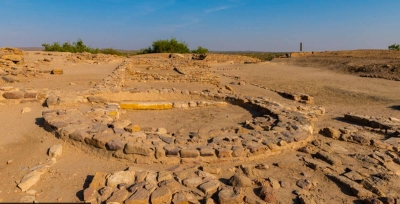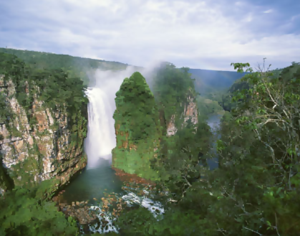What is Dholavira famous for?

Dholavira is a well-preserved Harappan-era city situated in the Rann of Kutch, Gujarat. It is the fifth largest metropolis of Indus Valley Civilisation excavated so far, after Mohenjo Daro, Harappa, and Ganeriwala in Pakistan, and Rakhigarhi in Hanjana, India. Dholavira is also the most dominant archaeological site of the Indus Civilisation in India.
The ancient city, dating from the 3rd to mid-2nd millennium BCE (3000-2500 BCE), was excavated by the Archaeological Survey of India in 1967. The site, which served as a commercial hub for over 1,500 years before its decline in 1500 BC has a citadel, a middle town, and a lower town with walls made of stone. According to UNESCO, the ancient urban settlement stands out for its water management system, multi-layered defensive mechanisms, extensive use of stone in construction, and special burial structures. A range of artefacts of copper, shell, stone, jewellery, and terracotta had been found at the site. Sites such as these provide valuable insights into the ways of life of earlier societies, their knowledge, and customs.
With Dholavira joining the coveted list,Gujarat now has four world heritage sites - the others being Rani Ki Vav of Patan, Champaner fort, and Ahmedabad City.
The Indus Civilisation
The Indus Valley Civilisation or Harappan Civilisation was one of the earliest human civilisations which flourished around 2.500 BC in the western part of South Asia (present day Pakistan and western India) Basically an urban civilisation, it was characterised by neatly planned, well-built cities which served as centres of trade. So far over 1.400 sites of the indus Civilisation have been discovered, of which over 900 are in India and over 400 in Pakistan.
What is a World Heritage Site?
A World Heritage Site is a place designated by UNESCO (the United Nations Educational, Scientific and Cultural Organization) for its special cultural, historic or physical significance. The list of World Heritage Sites is maintained by the World Heritage Programme administered by the UNESCO World Heritage Committee. UNESCO, headquartered in Paris, France, seeks to encourage the identification, protection and preservation of heritage around the world.
What does the status mean?
UNESCO awards world heritage status to sites considered to be of special value to humanity. The sought-after distinction brings intangible benefits boosts tourism, and can help secure funding for the preservation of sites.
Picture Credit : Google
